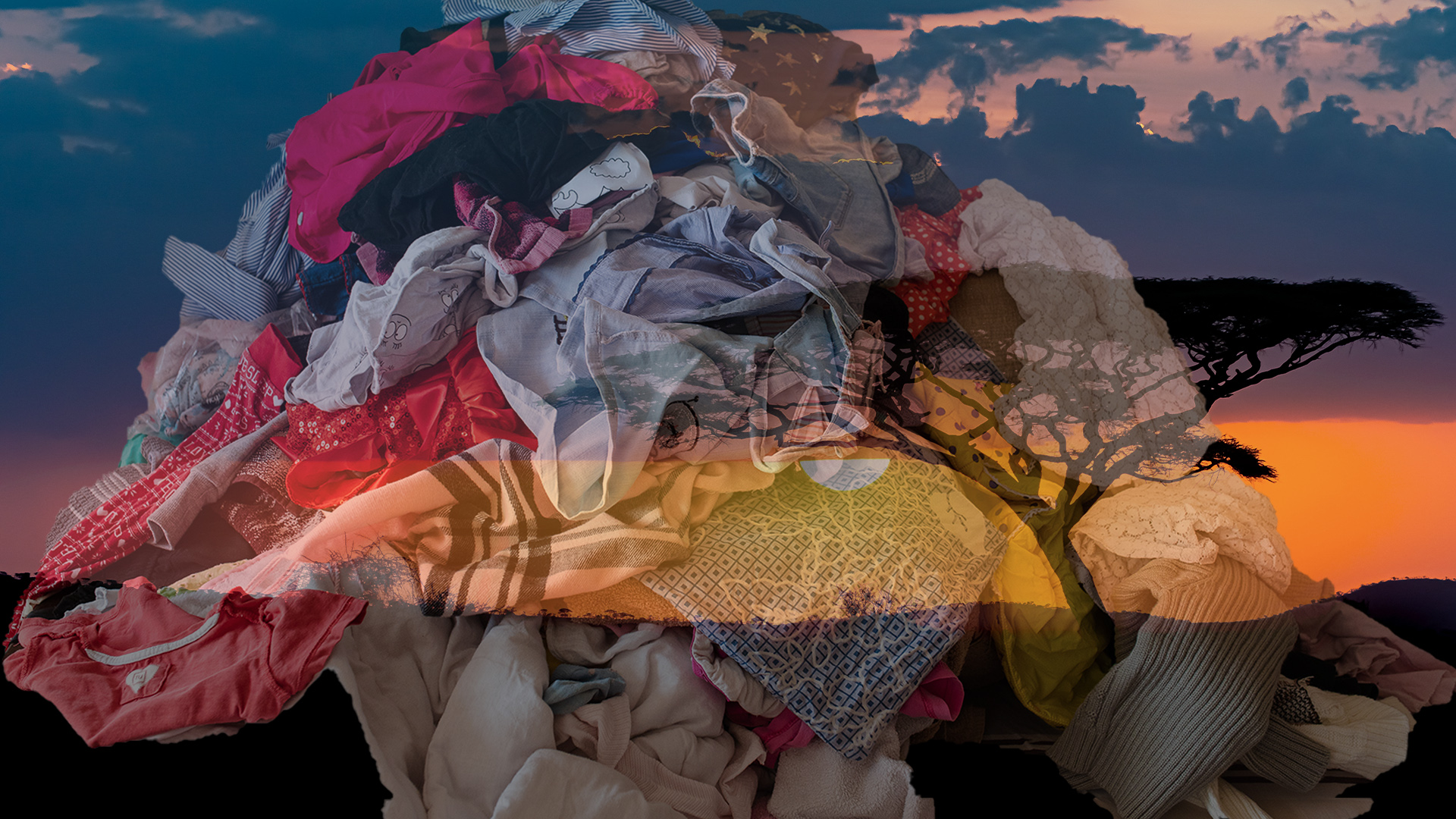Second-hand fast fashion is turning Africa into a dumping ground, polluting its environment and population.
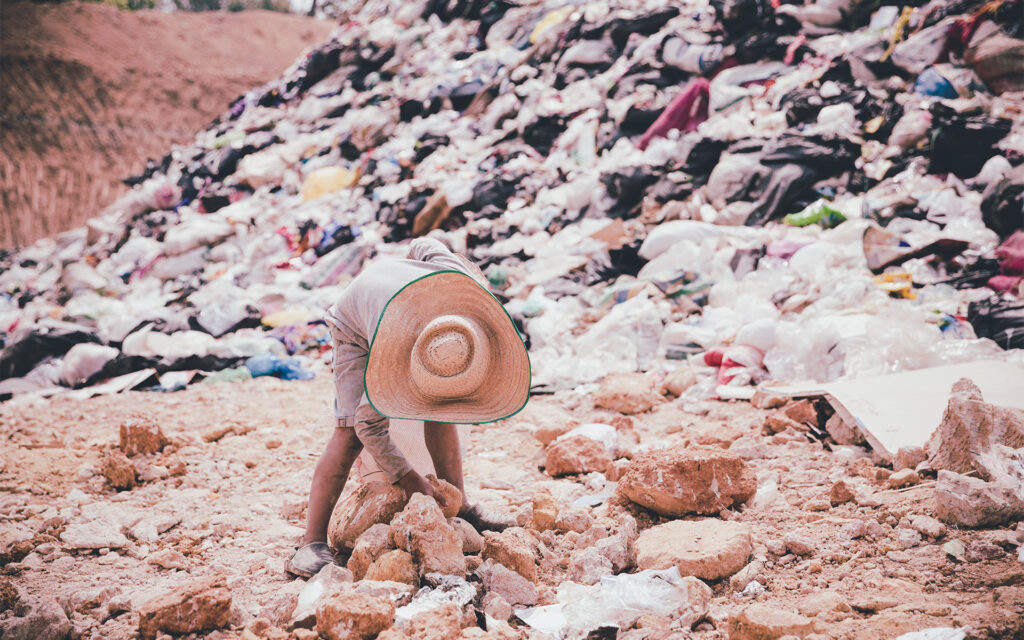
What is the final destination of the garments?
According to the Global Fashion Agenda’s Pulse report, since mid-2000, the number of items purchased by the average consumer has more than doubled.
This has led governments, usually from Western countries, to send many of these textiles to developing countries, aiming to have them sold by third parties.
However, it is estimated that 70% end up in huge landfills in countries without environmental regulations and the infrastructure to dispose of them.
According to the Ellen MacArthur Foundation, 3% of used clothing is disposed of in landfills or incinerated worldwide. Of the total fibers used to make clothing, 87% are burned or disposed of in landfills.
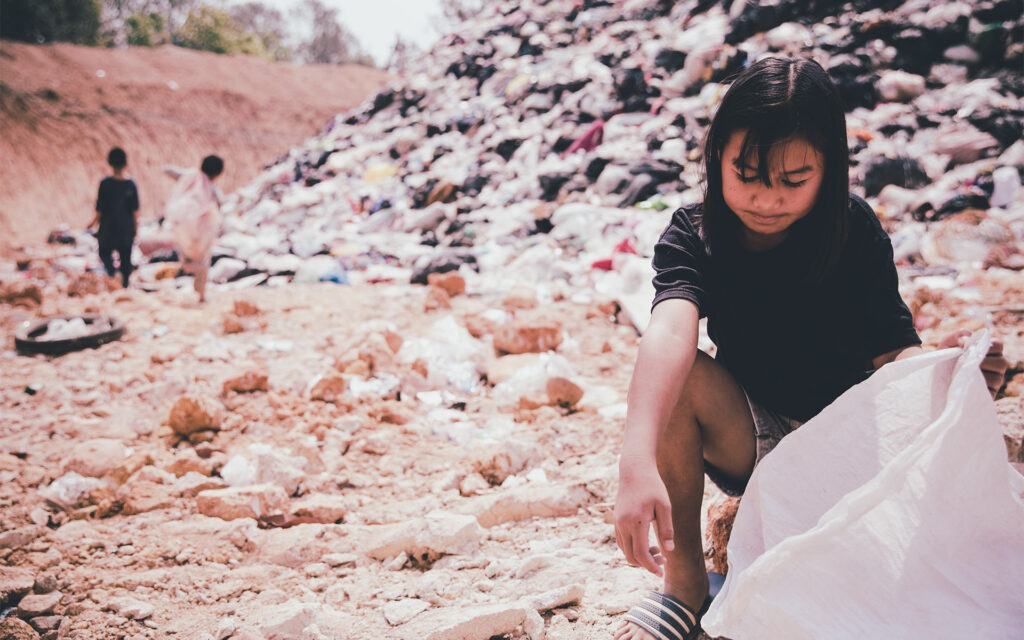
Worrying data
- Every year 150,000 million garments are produced worldwide;
- Garments are worn 36% less than 25 years ago;
- 80% of unwanted fabrics end up in the same country where it is manufactured;
- Every week a truckload of second-hand clothes arrives and ends up in landfills, rivers, or incinerators;
- Every year, 11.3 million tons of textile waste are landfilled;
- Fashion generates over 1.2 billion tons of greenhouse gas emissions every year.
Africa, the landfill
The textile sector is already the second most important in African markets, after agriculture. But the second-hand fast fashion items that African countries are receiving carry an environmental, economic, and social problem of enormous proportions.
A report by the non-profit organization Water Witness International on the water footprint in fashion shows how fast fashion companies are contributing to the pollution of African rivers to the point that in some areas the water has become alkaline like bleach.
It also highlights the fact that these brands are increasingly buying garments from contractors in African countries, attracted by their cheap labor and tax incentives.
While second-hand fashion is believed to create jobs in Africa, wages are low and the garments they receive are often of such poor quality that they have to sell them at a loss.
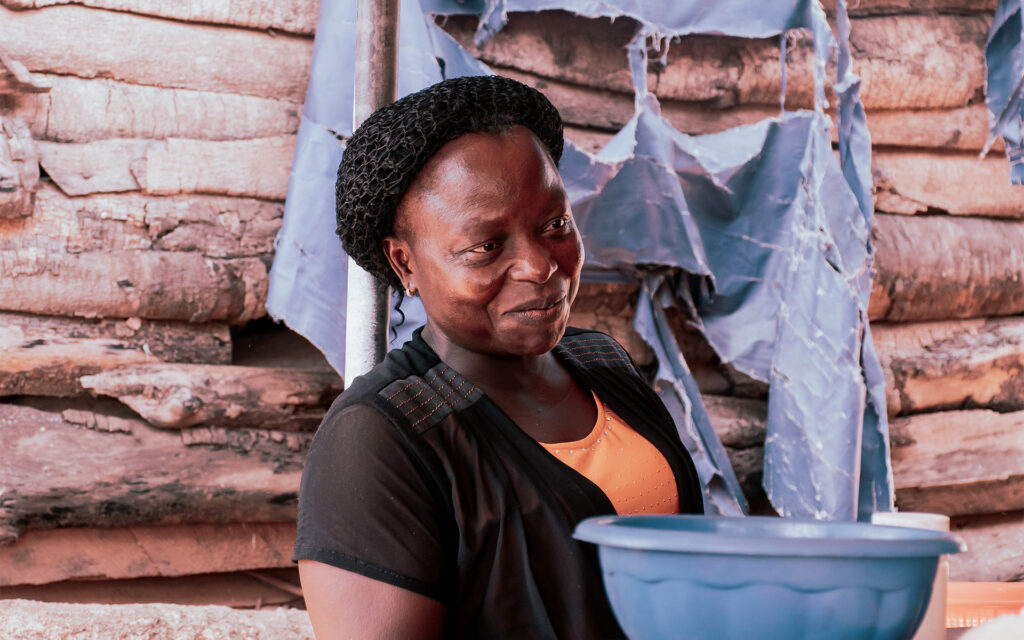
What is happening in Ghana
Every week, this African country receives 15 million second-hand fast fashion items, shipped from Europe, the United States, and Australia.
This type of garment that Ghanaians call “Obroni Wawu” means clothes of dead white people.
In Accra, its capital, Kantamanto Market is the largest selling center for second-hand garments from the West.
According to a report by the Tony Blair Institute for Global Change, it is estimated that, in 2019, more than 65 million tons of second-hand clothing were shipped and about 40% could not be sold due to their poor quality, with landfills as their final destination.
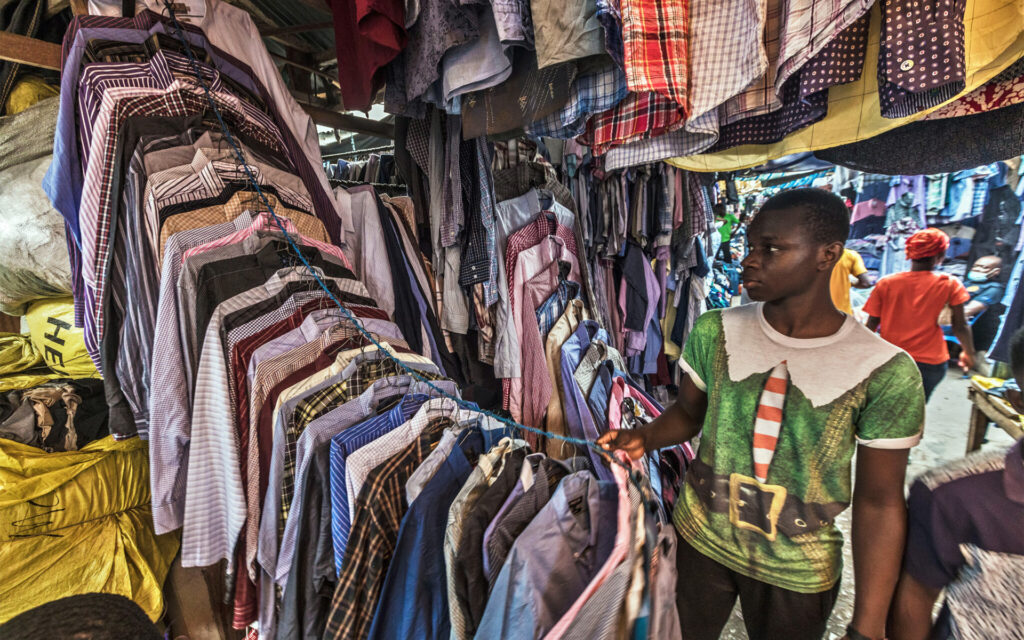
What is happening in Kenya
Kenya is one of the largest importers of second-hand clothing in Africa.
It receives 4,000 tons of waste every day, even though in 2001 the country’s authorities declared that it was at the limit of its capacity.
Mitumba (meaning “bales”) is the term used to refer to second-hand packages and clothing “donated” by countries and arriving wrapped in plastic.
The Mitumba industry is an important source of revenue for the Kenyan government because of the taxes it collects.
In addition, it is estimated that 91.5% of Kenyan households buy second-hand clothes at a price of around $9, damaging the indigenous textile industry.
While exporting these garments generates income, small traders who buy bales can be affected because they do not know what is inside.
This is the case with what Kenyans call “phage“. Refers to low-quality imported garments. They cannot use them but sell them at low prices since being made with plastic fibers, they can be used as fuel.
Research conducted by Clean Up Kenya and Wildlight for the Changing Markets Foundation showed that in 2021 alone, Kenya received a total of 900 million second-hand garments.
Between 20% and 50% of clothing items could not be worn because they were damaged, stained, too large, or culturally inappropriate.
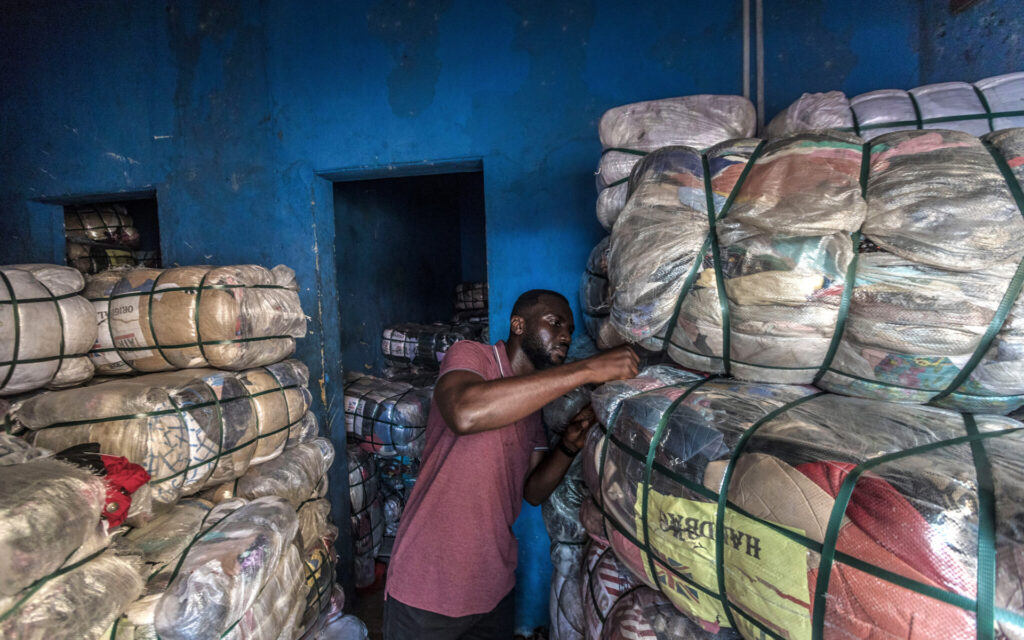
The export of used clothes to poor countries has become an outlet for systematic overproduction and a stream of stealthy waste that should be illegal.
Changing Markets Foundation
Poisoned gifts
In 2022, Greenpeace Africa and Germany investigated the devastating consequences of second-hand fast fashion in Kenya and Tanzania.
“With this research, we have shown how countries and companies in the Global North are neglecting their responsibilities when it comes to managing the huge quantities of garments that are not sold or discarded, many of them with dangerous compounds. They leave the peoples of East Africa alone facing exported plastic and textile waste, without any infrastructure for its disposal.”
Their report shows that 30 to 40 percent of donated second-hand clothing can no longer be sold or worn. They end up in landfills, rivers, or incinerated in the open air, polluting the air and water.
Trashion
This documentary exposes the high volume of second-hand clothing exported to Kenya.
They are mostly damaged or unsaleable garments, made with synthetic materials and end up in landfills or burned, creating devastating consequences for the African environment.
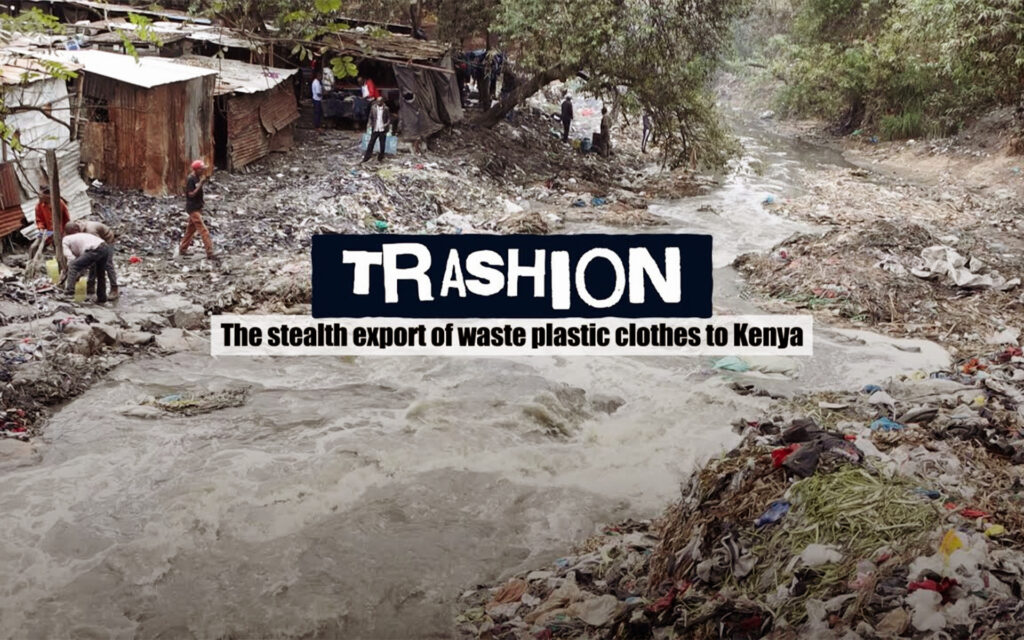
Urgent change
Every second of every day a garbage truck with second-hand clothes ends up in a landfill.
Western countries look the other way about garments that are discarded and polluting the African environment.
That is why we need international regulations banning the export of textile waste to countries with low resources.
It is time for all of us to look at our clothes with different eyes. It is necessary that we start taking care of them and buying better quality to make them last longer. This will reduce our impact on the planet.


